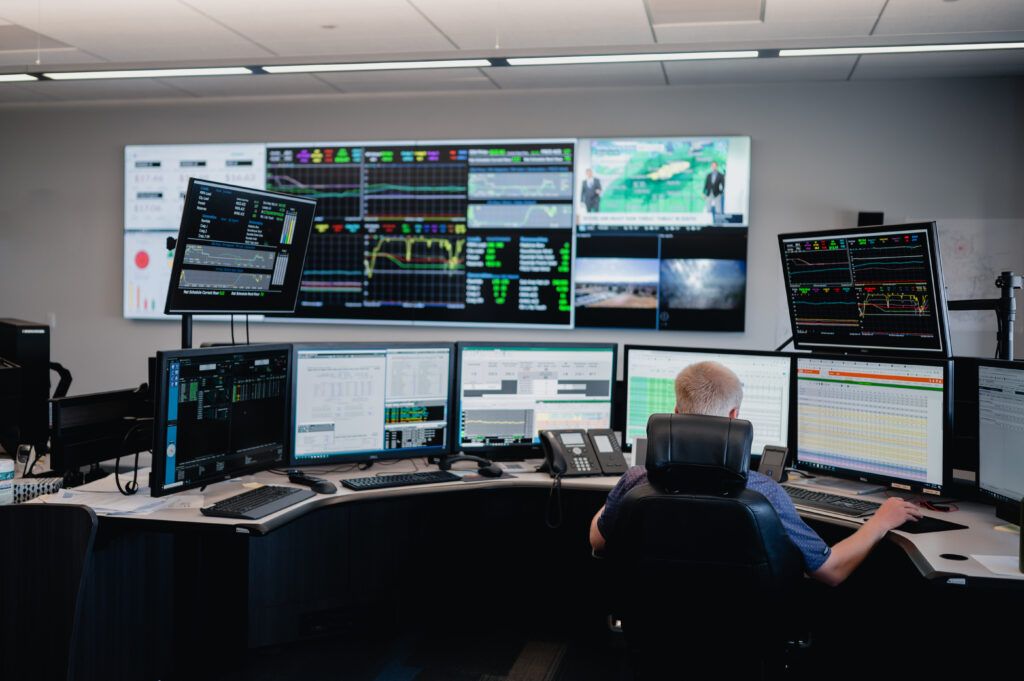How market participation facilitates the region’s renewable energy use

Platte River Power Authority is the wholesale electricity provider for Estes Park, Fort Collins, Longmont and Loveland. Their diverse energy portfolio includes hydropower, coal, natural gas, wind and solar. In 2018, Platte River’s Board of Directors – the mayors and utility directors or council members of each owner community – passed a Resource Diversification Policy directing leadership to pursue a 100% noncarbon energy mix while protecting the organization’s foundational pillars of reliability, environmental responsibility and financial sustainability.
The Resource Diversification Policy noted several advancements needed for Platte River to achieve the goal. One is actively participating in an organized energy market, where Platte River buys and sells electricity in a multi-state regional market.
“Joining an energy market is key to managing our costs and integrating more renewable energy onto our system,” says Jason Frisbie, CEO and general manager of Platte River. “It will take hard work across the organization to receive the full benefits of membership and become an engaged and proficient participant.”
There are several requirements for market participation. Load-serving entities like Platte River must be resource adequate—that is, demonstrate their resources can meet their customers’ electricity demand (plus a reserve margin) in all weather conditions, all day, every day. For example, a utility with peak electricity demand of 100 megawatts (with a 15% reserve margin) must have 115 megawatts of capacity available to participate in the energy market.
Other requirements include financial liquidity and the software, hardware and staffing to manage daily operations. Participants that meet all requirements gain several benefits—notably, broader access to renewable energy. Energy markets allow utilities to pool their resources so they can maximize wind and solar output across a broad footprint.
“Reporting shows us that regional markets have at times seen up to 90% renewable energy serving their system load,” says Melie Vincent, COO of generation, transmission and markets for Platte River. “This concentration of renewable energy is not possible without a market, and that’s why membership is such a critical step for Platte River to achieve our goals.”
Participating in an organized market can also reduce costs. Markets operate on a least-cost basis, meaning resources with the lowest production and delivery costs are deployed first. Markets also manage regional transmission planning and installations to deliver resources more efficiently across a large geographic footprint.

Platte River joined the Southwest Power Pool (SPP) Western Energy Imbalance Service market in 2023 and is preparing to join SPP’s Regional Transmission Organization West in spring 2026.
“I appreciate the years of planning and negotiations leading up to this milestone,” says Tyler Marr, deputy city manager for the City of Fort Collins and Platte River board member. “Joining a market not only advances our shared energy goals; it also helps expand renewable energy across the region, which benefits communities beyond our service territory.”
To learn more about Platte River’s commitment to a clean energy future, visit prpa.org/future.
Platte River Power Authority joined an organized energy market in 2023 and will join another in 2026. Read more about the how these efforts benefit the communities of Estes Park, Fort Collins, Longmont, and Loveland.
